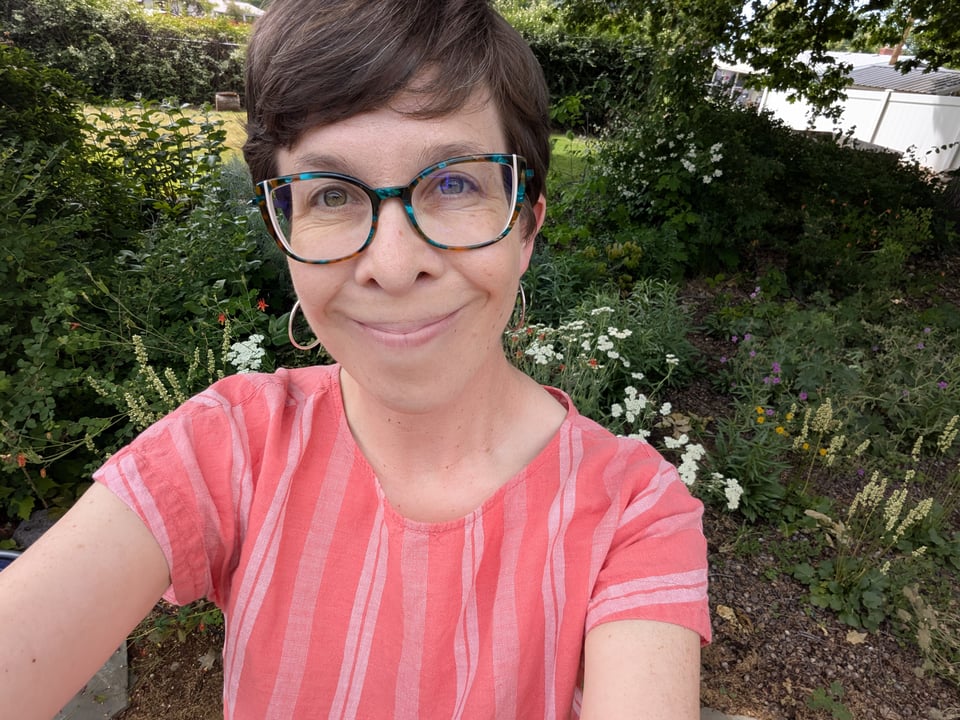Bird of Passage: June 2025
On transitions and the start of summer.
This is my son’s final week of first grade. It marks the end of an especially busy time of year for our family—May includes my son’s birthday, my mother’s birthday, my birthday (hello thirty-eight!), Mother’s Day (of course), and my spouse’s and my wedding anniversary, and this year it included two weekend work trips for me as well. Now that that’s behind us, we’re in a time of transition for the whole family as we shift from our established school routines into day camp schedules and summer travel.
And I’m dealing with some transitions of my own. I recently accepted a new part-time job as a Garden Education Manager with our local farm-to-school organization, meaning I’ll be helping out with some miscellaneous activities over the summer and then starting regular hours running a school garden at one of the local elementary schools (not my son’s, unfortunately!) in the fall. I actually have a master’s degree in environmental education, but I haven’t done any paid work in this field since moving to Walla Walla over a decade ago and getting into science writing and science communication. I’m really looking forward to getting back to it.
This doesn’t mean I’m not continuing with science writing—I’ll be doing both, getting paid to write about birds and garden with kids, to sit in my home office interviewing scientists and thinking and writing and to get out into my community and get my hands dirty. And by the way, that recent thirty-eighth birthday? It was the fifth one I’ve gotten to celebrate since being diagnosed with stage 4 cancer in 2020. An embarrassment of riches.
I hope each of you reading this is well and safe. I hope you got to enjoy spring migration and have fun summer plans on the horizon. I hope you’re finding meaningful ways to fight all the hatred and despair in the world right now.
More soon.

Words About Birds
First up: Have you ever wondered how migrating birds are able to keep flying for days at a time without a break? You may recall from a long-ago biology class that mitochondria are the powerhouse of the cell, and it turns out they’re also the powerhouse of the migrating bird. This story from Quanta goes over recent research showing that birds prepare for long-distance journeys by producing specialized, high-capacity mitochondria to fuel their flights.
I live on one of the regions that Anna’s Hummingbird, once found only in California and Baja California, has expanded into in the last six decades or so. So I was fascinated by recent research on Anna’s Hummingbirds that, among other things, used historical museum specimens to track how their bill shape has evolved as their range has grown. In just ten generations or so, they’ve developed longer, pointier beaks to better access the “nectar” in hummingbird feeders and fend off competitors!
Another bird that made the news last month? Archaeopteryx! A new Archaeopteryx specimen, the best-preserved example ever found (with even the imprints of its skin intact!), has revealed new details about the transition from non-avian dinosaurs to birds. For one thing, it appears that Archaeopteryx had secondary flight feathers, or “tertials,” something modern flying birds have but older feathered dinosaurs lacked.
In Wyoming, middle school students and a local artist have helped National Park Service staffers create a flock of papier-mâché sage-grouse—but this isn’t just an art project. The fake birds are being deployed as decoys to lure sage-grouse to move the site of their mating display, or “lek,” away from an airport in Jackson Hole and to a safer site. I love quirky field methods, so I thought this was pretty cool.
Finally, a “just for fun” one: If you don’t already know about hoatzins—gangly, smelly birds from South America that have vestigial claws on their wings when they hatch—then well, you should, and this article from LiveScience is a great introduction to them.
Book Recommendation of the Month
At Home on an Unruly Planet: Finding Refuge on a Changed Earth by Madeline Ostrander. This is a book about people whose homes are being threatened by climate change… and yet it somehow manages to be hopeful and uplifting? Madeline Ostrander spent time with people in a community in eastern Washington (oh hi!) dealing with wildfire, a city in Florida facing sea level rise, a Yupik village in Alaska struggling to relocate before their homes are washed away be erosion, and a Bay Area city threatened by pollution from an oil refinery, exploring how all of them are coping and finding hope.
Bonus: Read my review of The Last Cold Place: A Field Season Studying Penguins in Antarctica on the American Birding Association website!
That’s it for this month! I’d love it if you’d consider forwarding this newsletter to a friend who might enjoy it. Thanks and take care!
Add a comment: